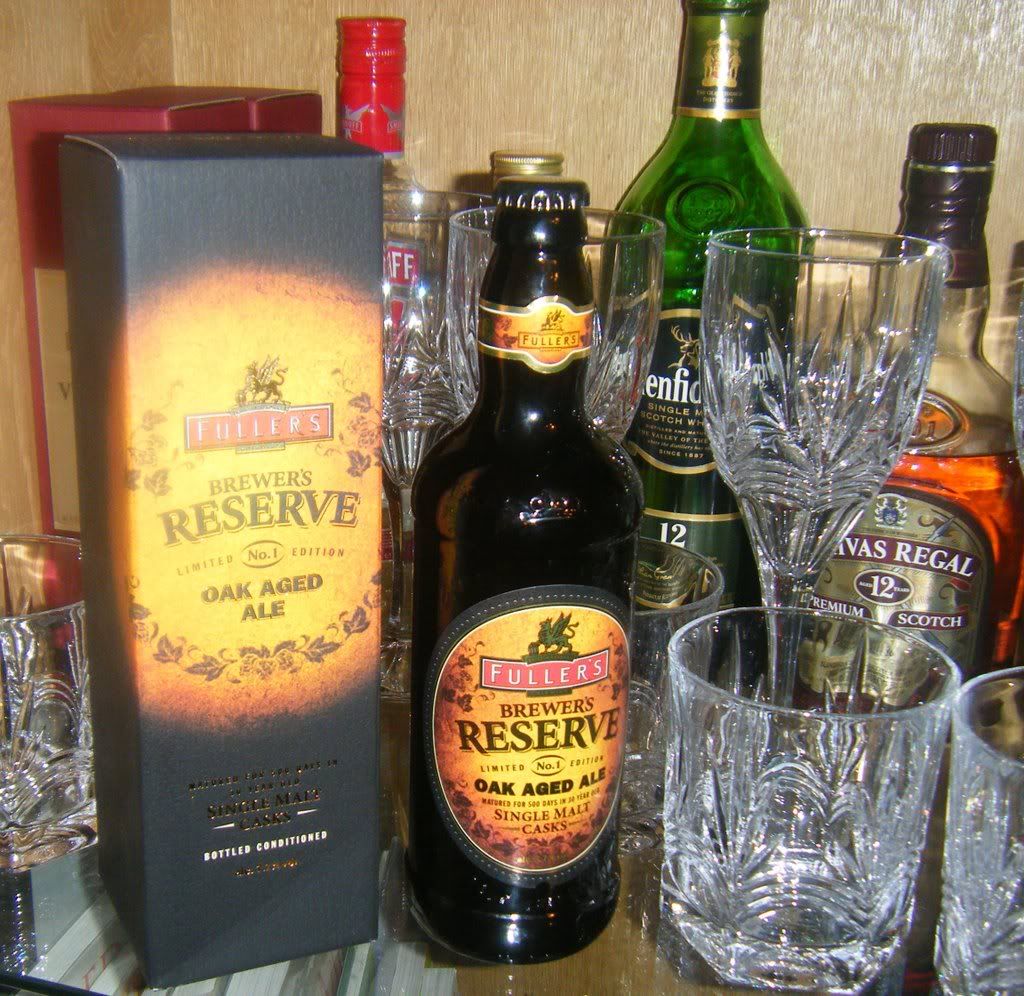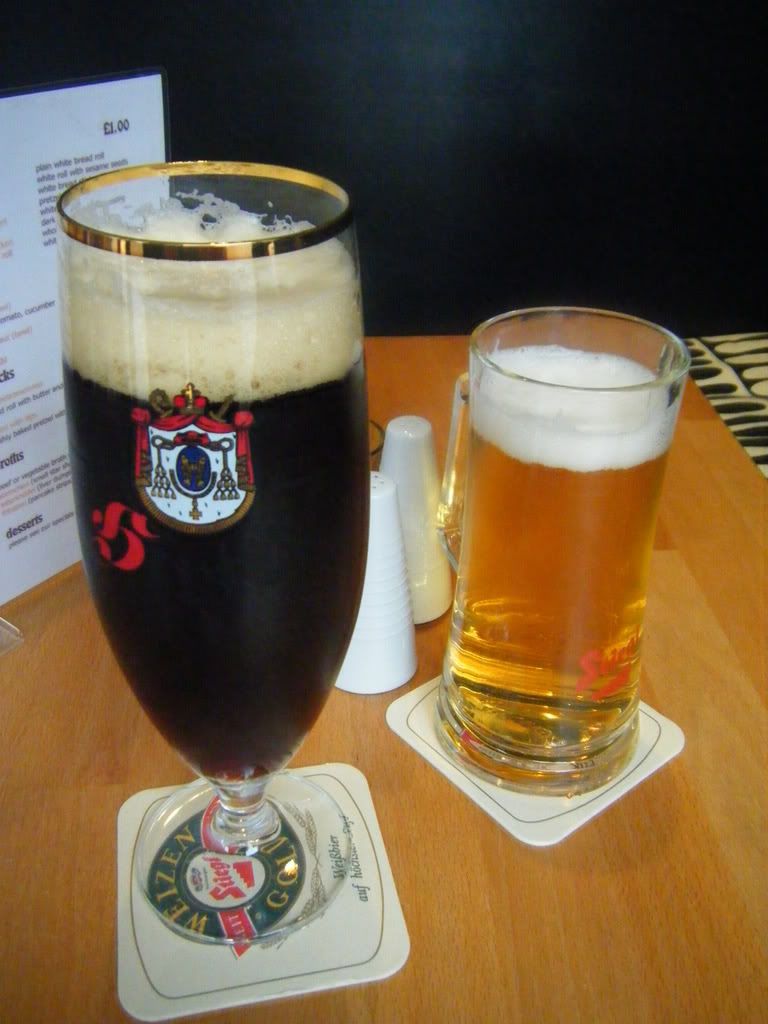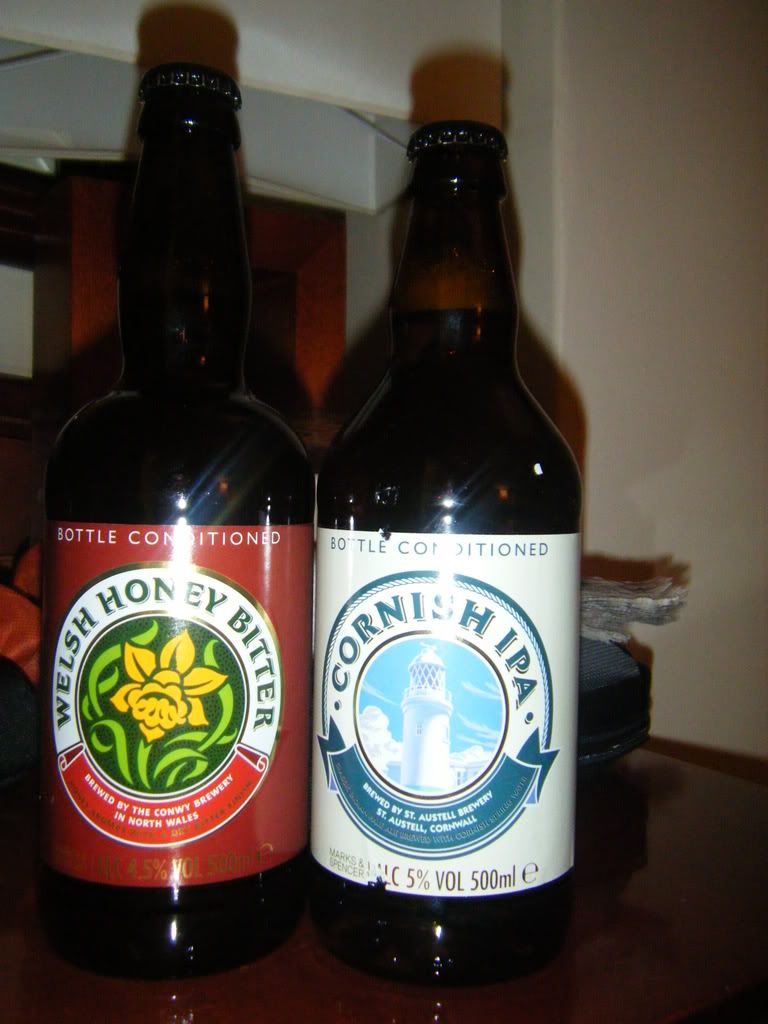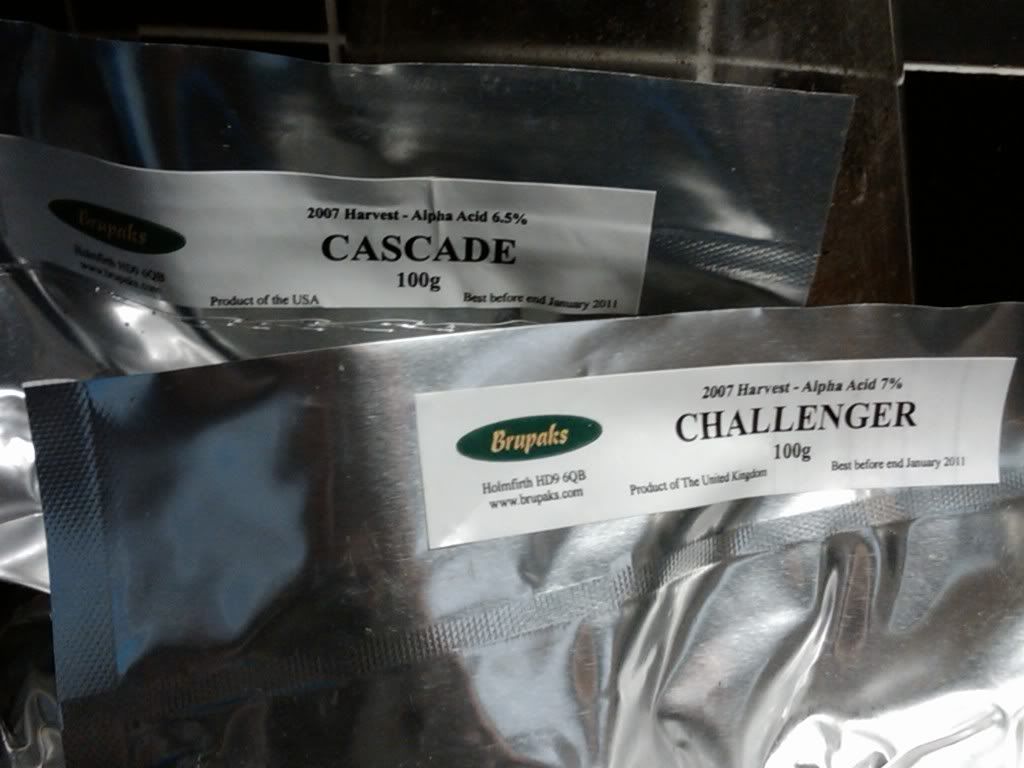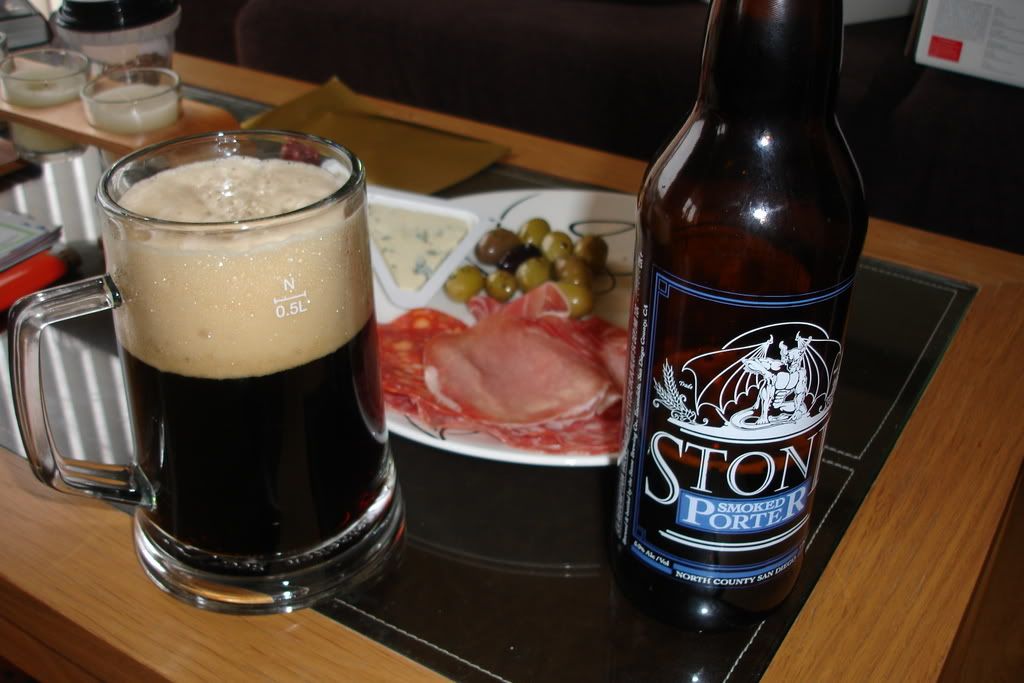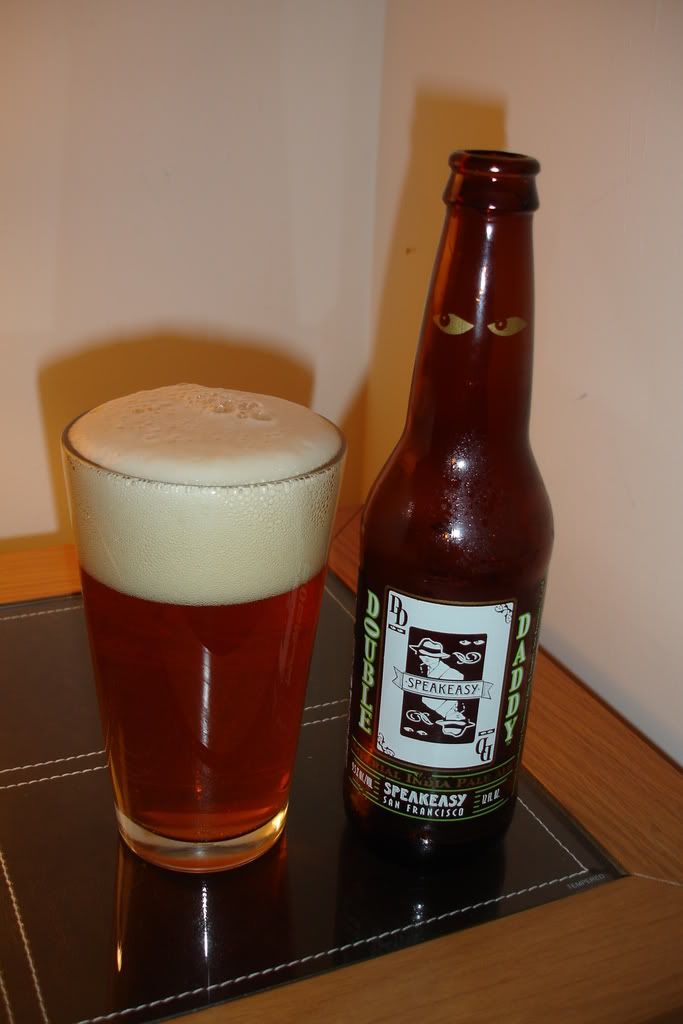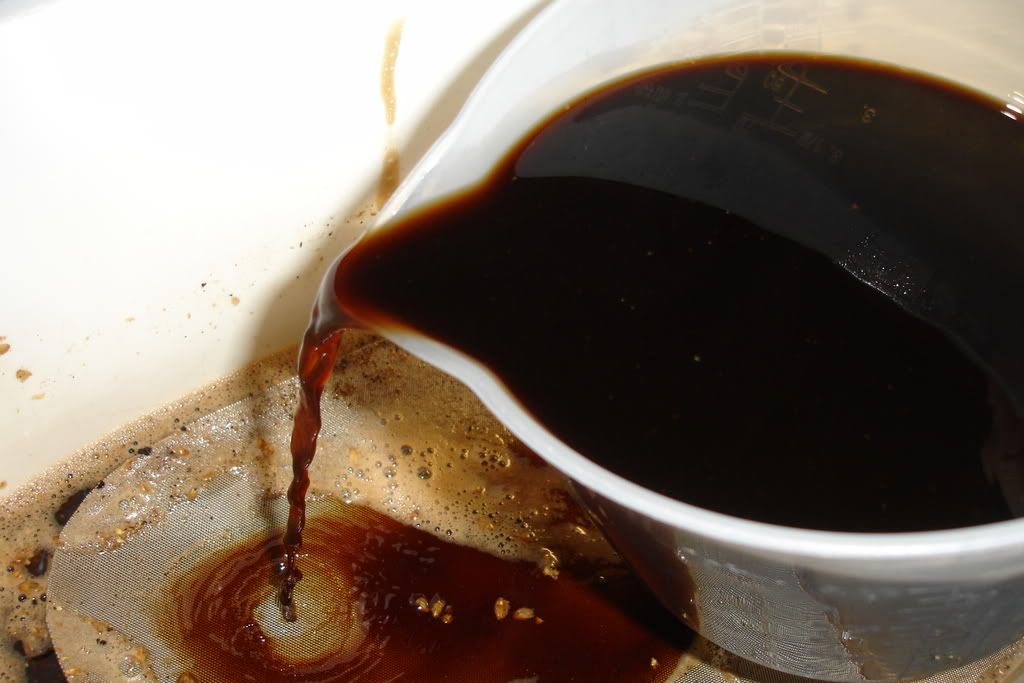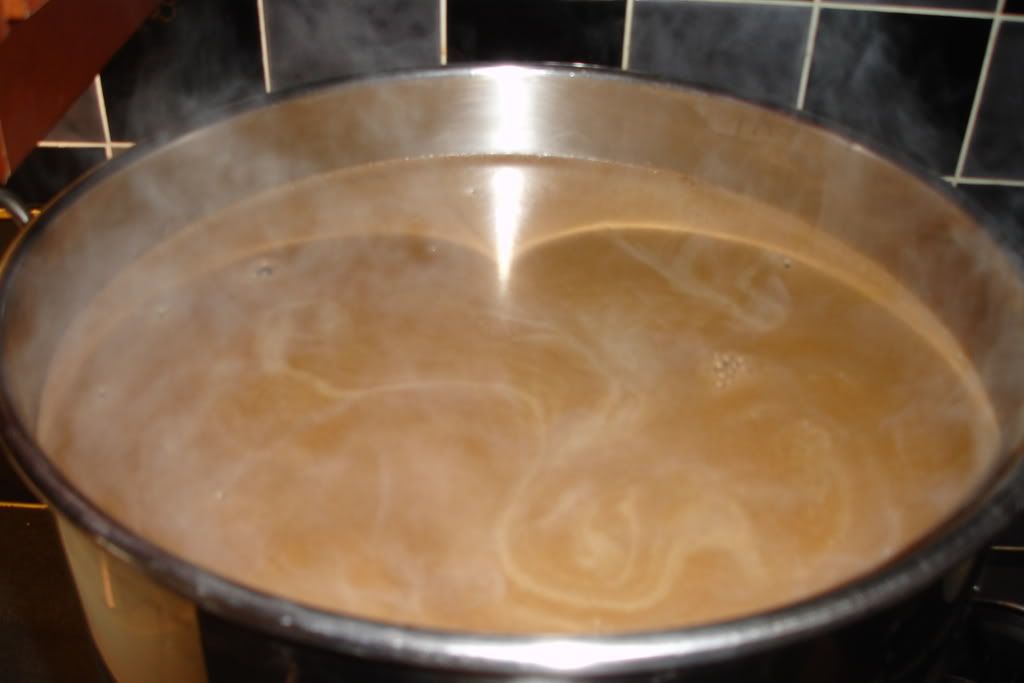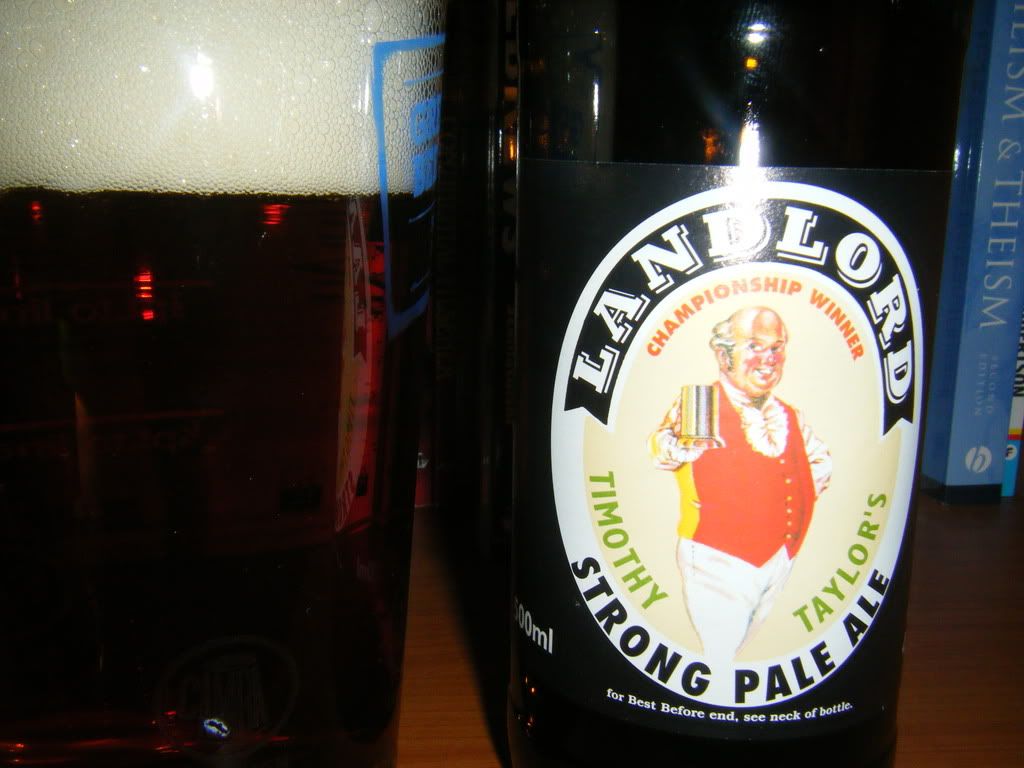 Bottled Landlord is described as 'strong' pale ale on the label which is a little curious because it is only 4.1% and far from strong in my book. A recent trip to Doncaster sheds some light on this somewhat unusual nomenclature because I had the pleasure of drinking with a group of bone fide northern English blokes who loved their bitter. All the bitter I drank while over there was around 3.5% abv and very malty, with an almost total lack of late kettle hops, except for the beer at hand this evening: Timothy Taylor's Landlord. This is set apart from other Northern English ales primarily because of the more aggressive hopping and slightly stronger alcoholic strength. I must also add that I enjoyed this beer more than the others I tried that weekend mainly because I am a fiend for hops and find malty bitters without the addition of richer malts to add a bit of compexity a little unsatisfying.
Bottled Landlord is described as 'strong' pale ale on the label which is a little curious because it is only 4.1% and far from strong in my book. A recent trip to Doncaster sheds some light on this somewhat unusual nomenclature because I had the pleasure of drinking with a group of bone fide northern English blokes who loved their bitter. All the bitter I drank while over there was around 3.5% abv and very malty, with an almost total lack of late kettle hops, except for the beer at hand this evening: Timothy Taylor's Landlord. This is set apart from other Northern English ales primarily because of the more aggressive hopping and slightly stronger alcoholic strength. I must also add that I enjoyed this beer more than the others I tried that weekend mainly because I am a fiend for hops and find malty bitters without the addition of richer malts to add a bit of compexity a little unsatisfying.While in London last week I chanced upon a bottle of Landlord and jumped at the chance to try it because I was fascinated to compare this award winning cask ale with the bottled version, which is filtered and force carbonated. There can be no doubt that it is a very different beer, arguable less enjoyable but still very good as bottled ale goes. My admission that it is inferior to cask will be music to the ears of the CAMRA member who engaged with The Beer Nut recently in a debate on exactly why CAMRA exist. He sees no real value in force carbonated beer, even if it is excellent, and makes me wonder just what CAMRA are up to. TBN makes the point that it would be better to fight the predominance of bad beer rather than worry about where the CO2 in the beer came from. There is plenty of awful cask and bottle conditioned beer out there. I have quite a lot of it inflicted upon me by the CAMRA beer club each quarter. They feature little on this blog because they just don't stir me sufficiently to write about them. Filtered, force carbonated beer on the other hand is very common on this blog, mainly because it is the most available form of beer I consume and also because it many cases it is outstanding in flavour and quality. What concerns me most about the discussion is the CAMRA member's opinion that every artificially carbonated beer he has tried is inferior to cask. Perhaps he has a point when comparing two indentical beers; often filtration and over carbonation will kill a flavourful beer - I have experienced this a number of times, but to suggest that all artificially carbonated beer is inferior is just rubbish. From my old pages here we need only look at Big Daddy, Stone Imperial Russian Stout, Sierra Nevada Stout as examples of outstanding filtered, force carbonated beers. These beers are world beaters in my opinion and deserve as much respect as real ale. They simply cannot be dismissed and anyone who would do so should question their ability to appreciate good beer.
Getting back to the beer in hand, it is an excellent ale brewed very well with mouth watering foam, full body and perfect carbonation. The hop aroma that I enjoyed from the cask is not there and I have at last experienced the harsh bitterness that The Beer Nut has decried. The bitterness is indeed rough and I can't say I have experienced this from the cask, but what makes this beer for me is the action of the yeast used in the Timothy Taylor brewery; it really gives this beer an extra level of complexity that has made this strain so sort after by home brewers. Wyeast offer it on a seasonal basis and I would rate it up there with the stubbornly flocculant Fuller's or Brakespeare house yeast which make their beer so wonderfully complex and chewy.
Not as enjoyable as cask but certainly not to be dismissed.
